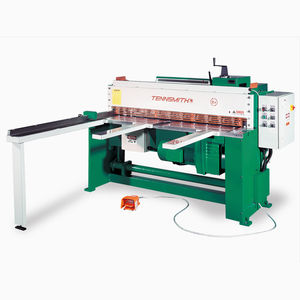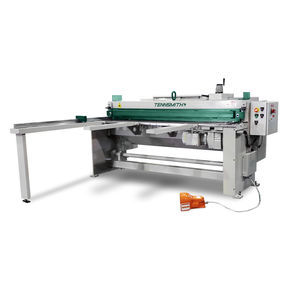

- Products
- Catalogs
- News & Trends
- Exhibitions
Hydraulic shear 36Asheet metalguillotine

Add to favorites
Compare this product
Characteristics
- Operation
- hydraulic
- Application
- sheet metal
- Type
- guillotine
- Working length
940 mm, 1,327 mm
(37.01 in, 52.24 in)
Description
TENNSMITH’s power shears combine all of the features of our foot shears with the advantage and convenience of air or hydraulic operation.
TENNSMITH power shears are a productive addition to any shop. The air shears utilize heavy-duty, tie rod-type pneumatic cylinders, which provide up to 40 strokes per minute in capacity materials.
A foot-operated air valve control, pressure regulator, air gauge, oiler/condenser cups and neoprene, padded holddown feet are standard features. We recommend a maximum air supply of 75 psi for operating these shears at rated capacity. Where air supply pressures exceed 75 psi, an in-line regulator is helpful to provide pressure control.
The model 52H cycles at 45 strokes a minute, thanks to its first class hydraulic system. The hydraulic unit is of a low maintenance design featuring a solenoid actuated valve, 3-hp electric motor, self-contained pump in tank with pressure gauge, check valve and industrial quality cylinders. The motor is protected by a magnetic starter.
Other electrical safety features include a low voltage on/off switch; low voltage, shrouded, electric foot switch; step-down transformer with low voltage circuit fuse; fully enclosed electrical box; and insulated reinforced conduit for all wiring. Models 36A and 52A are ideal ways to enhance shearing productivity with minimal investment.
All shears are standard, equipped with high-carbon/ high-chromium (HCHC) blades.
Standard equipment includes a back gauge, front extension arms with stop, bevel gauge and graduated side scales.
Additional options:
Squaring arm.
*Prices are pre-tax. They exclude delivery charges and customs duties and do not include additional charges for installation or activation options. Prices are indicative only and may vary by country, with changes to the cost of raw materials and exchange rates.







